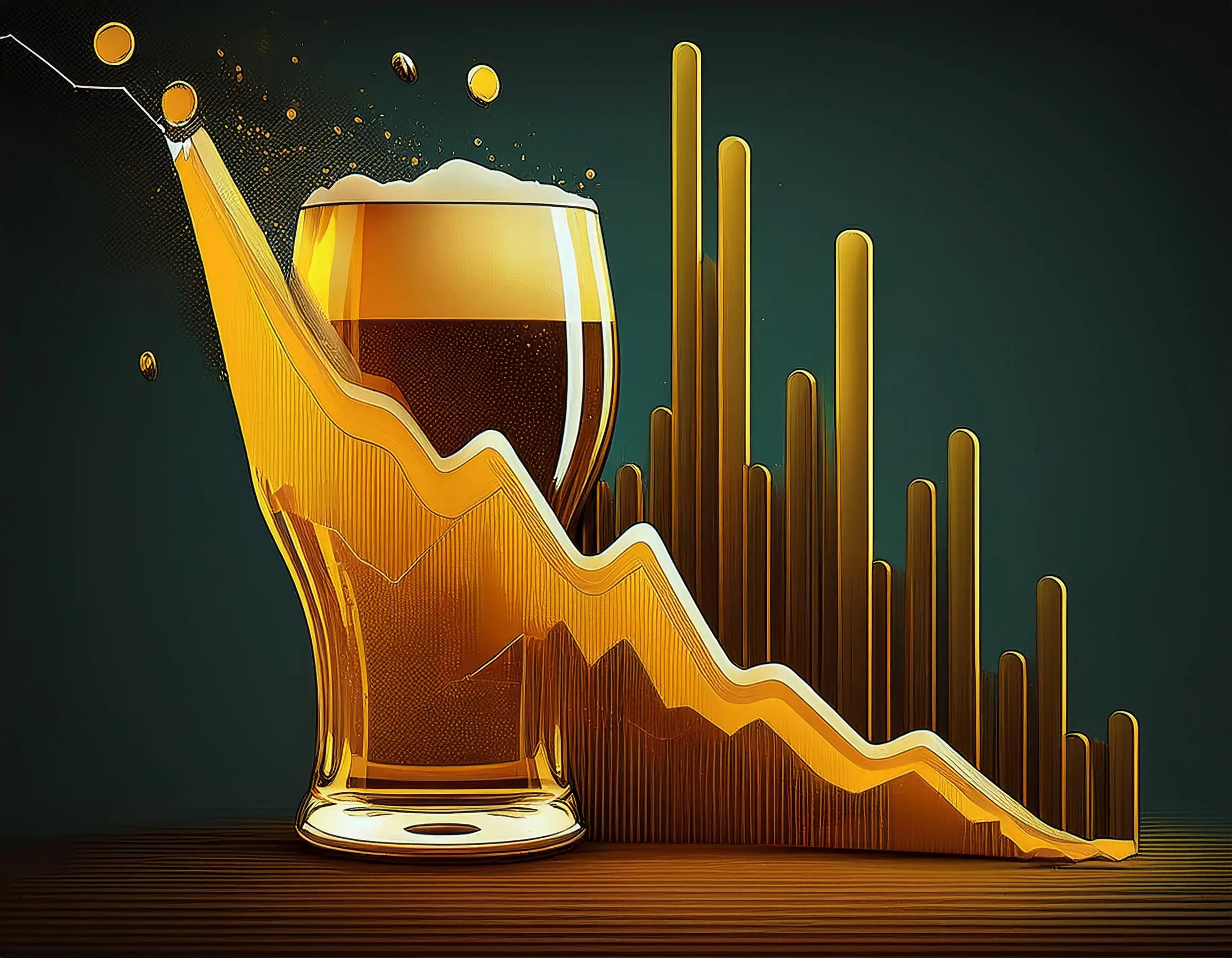Alcohol Tapering Guide

In This Article
Cutting back your drinking each day can help your body and mind adjust to a new normal. But the idea of alcohol tapering, the gradual reduction of alcohol, might seem counterintuitive. After all, you’re trying to stop or lessen drinking, not continue. However, using this method can help you avoid severe alcohol withdrawal symptoms and decrease the risk of a relapse.
What Is Alcohol Tapering?
Alcohol Tapering is a method of decreasing alcohol intake slowly and in a manageable manner. Rather than quitting cold turkey, which could lead to severe (maybe even fatal) withdrawal symptoms, tapering is a slower reduction of alcohol over time. Drinking less each day can help you eventually achieve alcohol abstinence or drinking moderation.
Who Should Consider Alcohol Tapering?
Alcohol Tapering can help people start their recovery journey, including those with goals of stopping completely or curbing drinking. Tapering can also be effective for people who are unable to attend an in-person program or detox to help them stop drinking.
“Anyone who uses alcohol frequently and in heavy amounts should consider cutting down to moderate drinking or stopping altogether,” explains Joshua D. Lee, MD, MSc, Chief Clinical Advisor at Oar Health.
Depending on the amount and length of time someone drinks, they may experience symptoms when tapering. Symptoms of tapering are similar to mild or moderate withdrawal symptoms, which include the following.
- Nervousness
- Trouble sleeping
- Sweating
- Gastrointestinal discomfort
- Headache
- Shakiness
For people who drink heavily and frequently, it’s wise to consult with a medical professional before tapering. “Some will experience withdrawal symptoms when they stop abruptly, which is an indicator for medically managed alcohol withdrawal treatments from a health professional.
But most people with alcohol use disorder (AUD) can stop drinking without experiencing severe alcohol withdrawal,” Dr Lee said.
Severe withdrawal symptoms, called delirium tremens (DT) can be fatal. Symptoms of DT include the following.
- Confusion
- Hallucinations
- Fever
- Sensory disruptions
- Heavy sweating
- Seizures
- Increased heart rate
If you start to experience any of the following symptoms, seek medical attention immediately.
How to Taper Alcohol
Alcohol Tapering requires some planning to create a schedule. The first step is to calculate how much you drink. With this number, you can make a plan for alcohol reduction. You’ll also want to monitor any symptoms that arise each day.
With tapering, you start slowly to minimize the chances of severe withdrawal and relapse, avoiding the shock quitting cold turkey can cause. Alcohol tapering should be personalized, based on how much and the length of time someone has been drinking.
If you have six drinks per day, you might create a schedule where you reduce the amount of drinks by one each day, until you are at zero or within the recommended guidelines for moderate drinking, which is two or less per day for men or one or less per day for women.
Depending on how much you drink and for how long, one rule of thumb is to avoid cutting more than 25% of your drinking intake at a single time to avoid withdrawal symptoms.
For the brain and body, it can be helpful to start slow. “Any relative reduction in daily alcohol intake is healthy and headed in the right direction,” explains Lee.
Below are some ideas to help people reduce their drinking by alcohol tapering.
Try Medication-Assisted Treatment
Many people employ medication-assisted treatment for alcohol use to help curb the euphoric effects of alcohol.
In particular, opioid antagonists, like naltrexone, can block the buzz people feel that makes another drink seem like a good idea, and thwart cravings for more.
“Using a medication such as naltrexone increases the overall chances that people can cut down or quit,” Lee said.
Drink Lower Alcohol Beverages
Choosing a drink with less alcohol content can help people taper. You might select a light beer instead of a harder liquor, like whiskey. You can also mix drinks with seltzer. To curb habitual drinking, alternating between alcohol and water is useful.
Dr Lee explains that choosing a non-alcoholic beer or a caffeinated beverage can help provide a small buzz.
Stay Hydrated & Nourished
Eating well and ensuring you are staying hydrated can stop dehydration and some of the nutrient deficiencies that come from prolonged alcohol use and withdrawal. Both can also help stabilize your mood.
Take Days Off Drinking
Taking days off within the week is a common strategy to encourage drinking less overall. “Many people still want to enjoy socializing but are mindful of wanting to average one to two drinks per day. They often try to not drink at all during the week, and allow for moderate drinking Friday through Sunday,” Dr Lee said.
Reach Out For Help
If you are struggling to stop or cut down through alcohol tapering, this may be a sign to seek more help, Lee said. There are a variety of resources to explore, including 12-step programs such as Alcoholics Anonymous (AA) or SMART Recovery, Lee explained.
“Additionally, increased doses of naltrexone, talking to a professional counselor, or finding online resources can help,” Dr Lee said.
Practice Self-Care
Part of an alcohol tapering plan should include ways you’ll tend to yourself during times when you have a craving or a bad day. Planning for social situations where you know there will be alcohol can help you navigate how to respond.
You might be surprised to find that you don’t need alcohol to enjoy certain events and previously would drink out of habit. “Replacing time or events spent drinking with other enjoyable activities is helpful. Exercise, family time, or cooking may provide distraction and promote your wellness,” Dr Lee said.
Tapering is one way to help those with alcohol dependence. This simple yet straightforward method can be safe and effective. Creating a structured plan including more resources and increased self-care builds a strong foundation for recovery. If you need more support, help is available.
“Don't be disappointed if change is hard—it is! Keep the big picture in mind through a goal such as reducing your drinking overall in a week, month, or year,” Dr Lee said.
Are You Drinking Too Much?
Is drinking affecting your job? Is alcohol harming your health or relationships? Does your drinking worry you? Ever tried to drink less but failed?
If any of this sounds familiar, and if AUD runs in your family, Oar Health might be right for you. Oar Health offers medication FDA-approved for the treatment of alcohol problems. A daily pill to drink less or quit.
About The Author
Xenia Ellenbogen (she/they) is a journalist specializing in health, mental health, and wellness. Her writing has appeared in publications such as Everyday Health, Well+Good, Rewire News Group, Prism, and more.
Related Articles
- How It Works
- Alcohol & Health
- Alcohol Misuse & Alcohol Use Disorder
- Strategies to Drink Less or Quit
- Treatment Options
- Medication-Assisted Treatment
- Recovery Stories
- Member Stories
- Moderation Stories
- Sobriety Stories
- ¹ Oar Health membership plans include access to the Oar Health platform, virtual consultations with a healthcare professional, and medication if prescribed by a healthcare provider. 3 month membership plan costs $297, equating to $99/mo.
- ² Self-reported by members after 6 months of Oar Health membership.
- ³ Verywell Health survey of Oar Health members, published March, 2023.
- ⁴ Prescription medication is available only if prescribed by a licensed clinician.
- ⁵ Compounded medications are prepared based on a prescription from a healthcare provider. They are not reviewed by the FDA for safety or efficacy.




